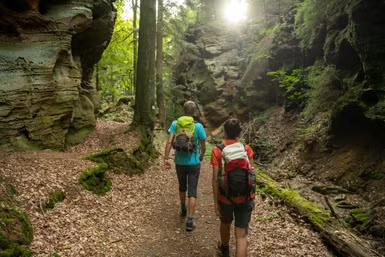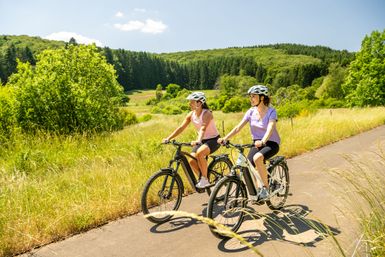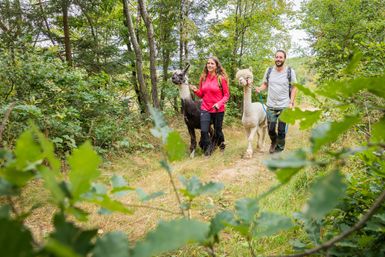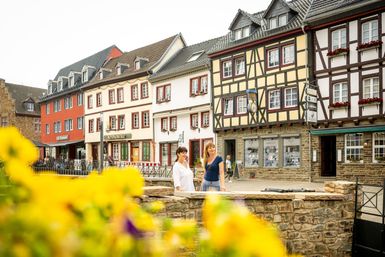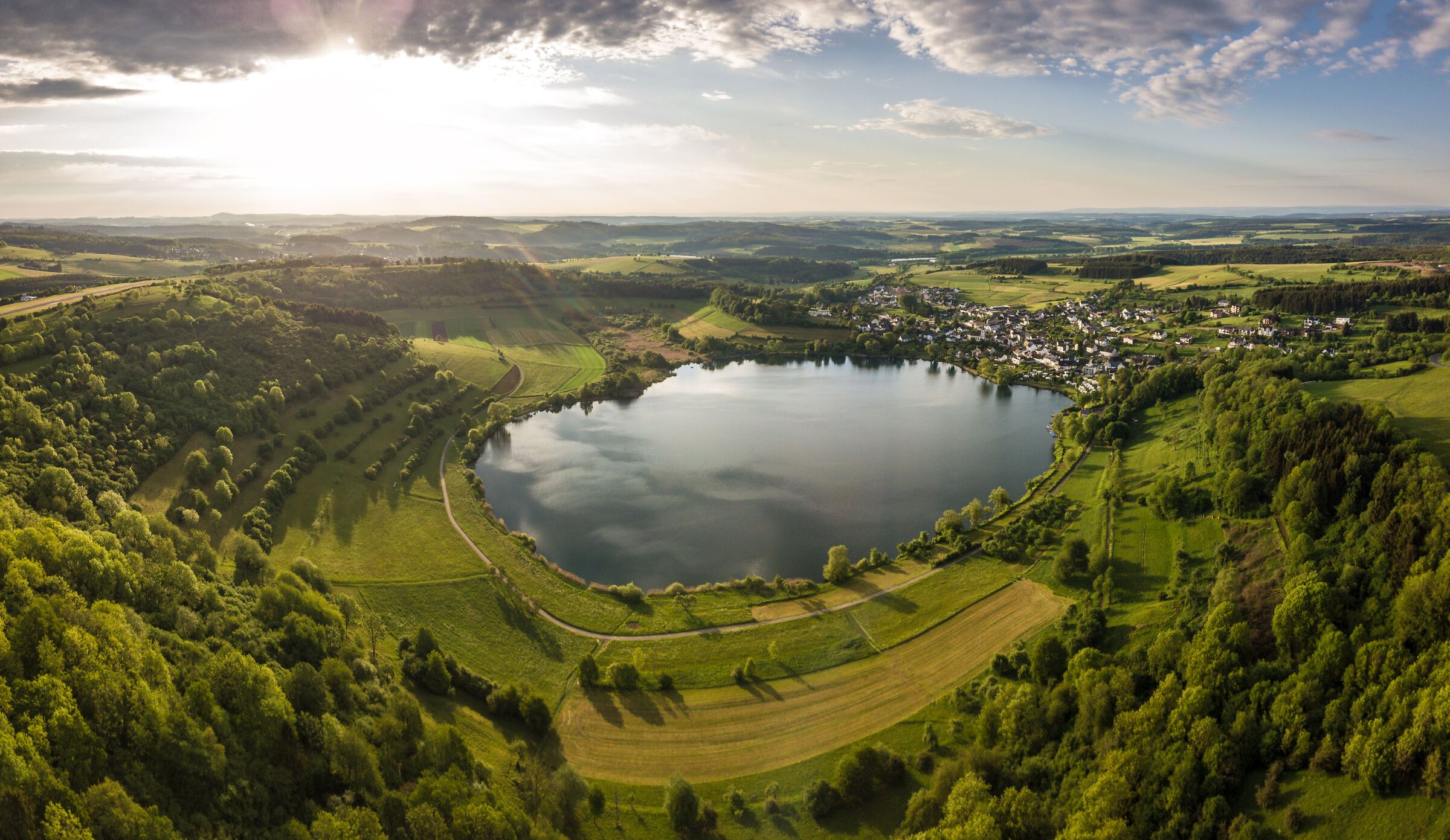
Top 15 excursion destinations
Discover nature, history and culture
The Eifel is a place for real experiences. When you are out and about here, you will encounter a landscape that tells stories: of volcanoes and monasteries, of artisan architecture and quiet retreats, of nature that touches and culture that remains.
Our top 15 selection shows you excursion destinations that allow you to experience the Eifel in different ways. Many of them can be easily combined with a hike or bike tour, others are ideal starting points for a day trip. They invite you to take a closer look. From the mysterious Laacher See lake to the imposing Eltz Castle, from the spiritual power of Maria Laach Abbey to romantic half-timbered towns such as Monschau and Bad Münstereifel and the wild beauty of the national park - each place is special in its own way.
Take your time, get involved - and get to know local stories and special features.
Top 15 excursion tips
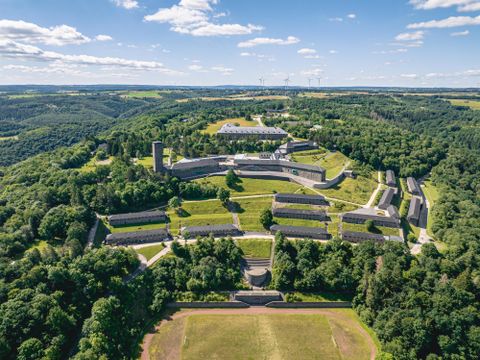



Vogelsang IP
SchleidenIn September 2016, the new visitor’s and exhibition centre, the Forum Vogelsang IP, was opened. The two main exhibitions are the documentation of the National Socialist period, “Destiny: Master Race. National Socialist Ordensburgen - Both Fascination and Crime” and the adventure exhibition “Wilderness Dreams” organised by the Eifel National Park Centre.
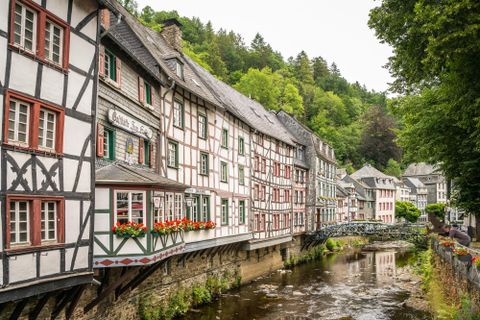
Historic centre of Monschau
MonschauThe historical old town of Monschau at the Rur.
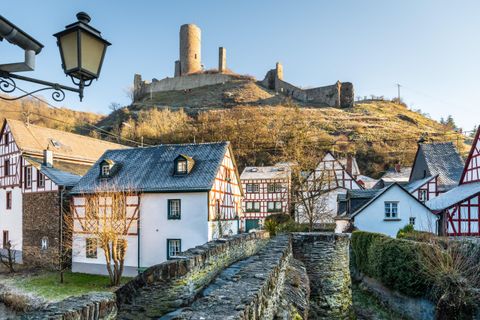
Half-timbered village Monreal
MonrealThe narrow streets of Monreal, its quaint Holy Trinity Church, the massive Nepomuk Bridge over the clear flowing Elzbach and the ruins of Löwenburg and Philippsburg castles high above the town are a perfect destination for an excursion in the eastern Eifel. The red and white half-timbered houses nestle closely together in the former cloth-making town. Not only visually is Monreal an excursion destination that relaxes the soul. Café Plüsch with its cosy interior or the former signal box at the gates of the town are perfect addresses for foodies. The highlight for lovers of handicrafts is the pottery in the old school. Hikers get their money's worth on the Monrealer Ritterschlag hiking trail and are rewarded for the sometimes steep passages with wonderful views.
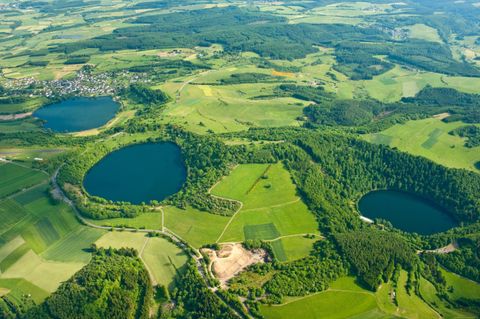
Maare der Vulkaneifel
DaunPowerful natural forces created these unique natural beauties. The "eyes of the Eifel", as they are commonly known, shimmer deep blue and captivate their visitors.
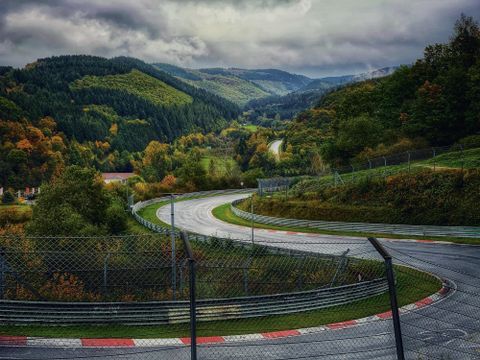
Nürburgring
NürburgThe Nürburgring Green Hell - racing, business, adventure, holiday

